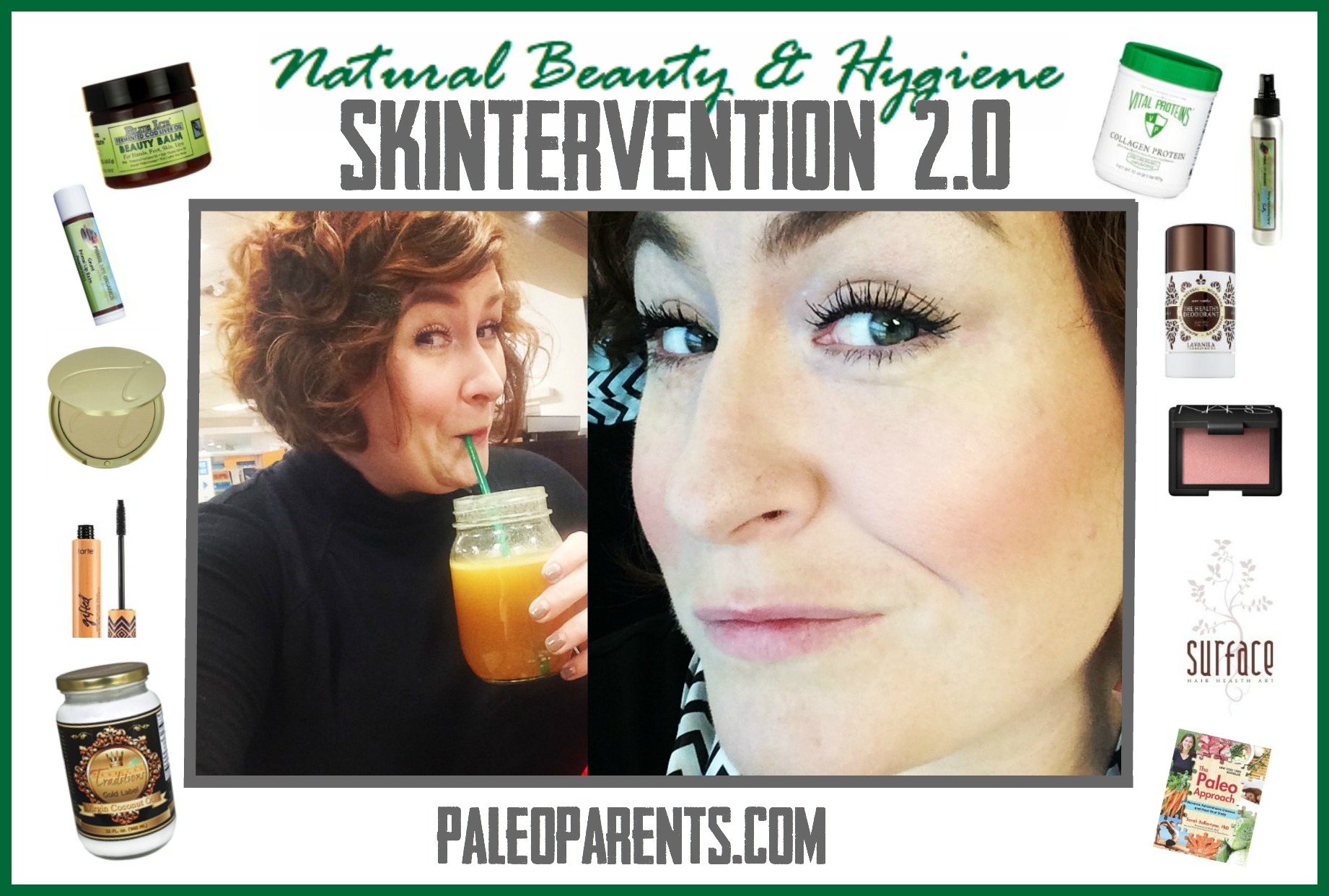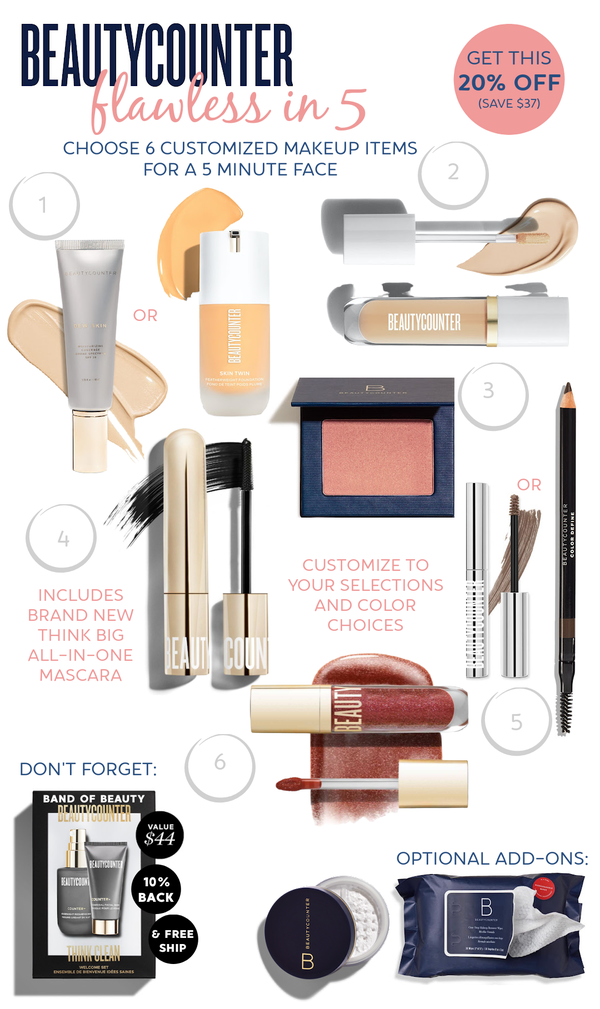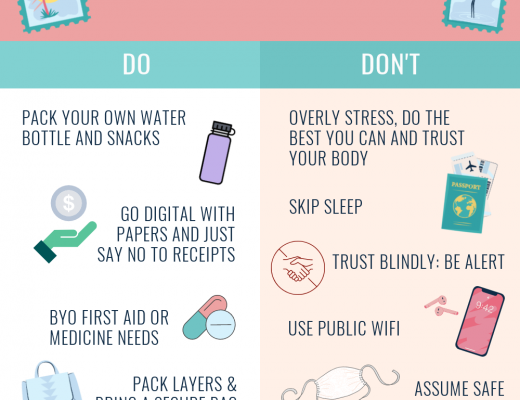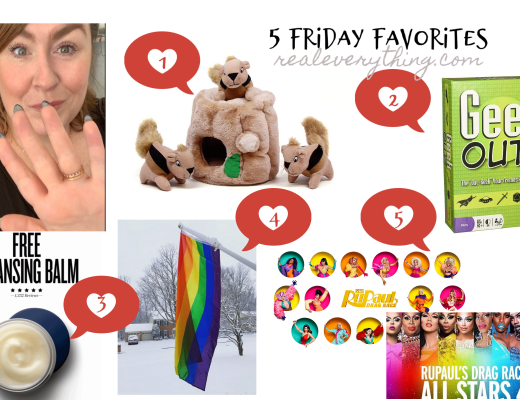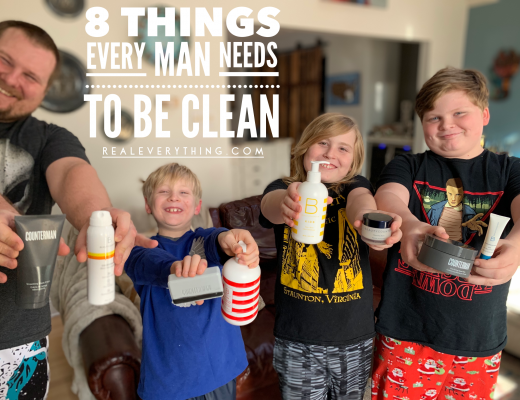Why Cleaner Cosmetics Matter: the case for learning about what ingredients (and hidden dangers like heavy metals) are in the products you put on your face each day.
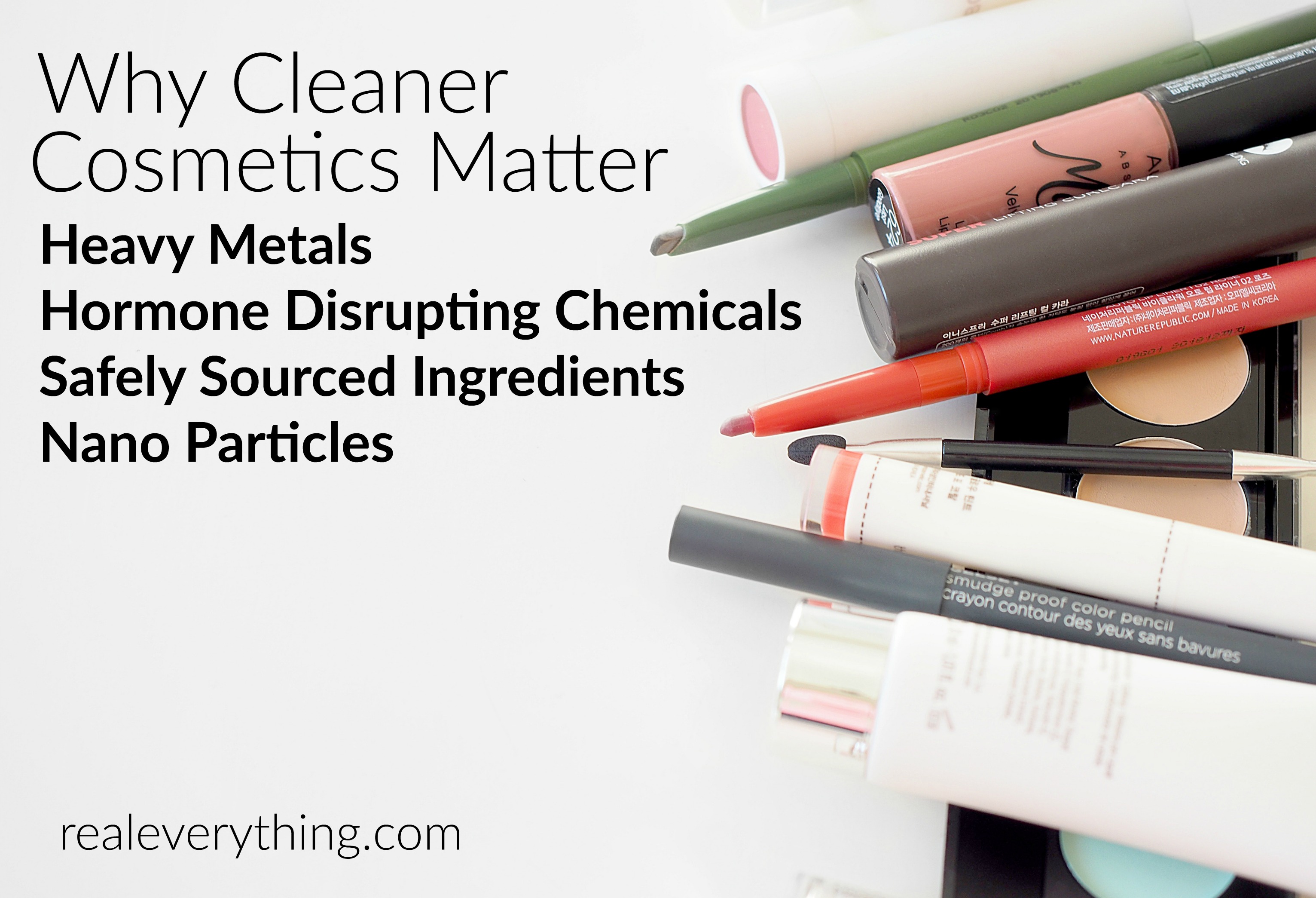
Years ago, well after I’d switched to safer skincare, I was still using my beloved highly-pigmented powder make-up from brands at stores like Sephora, Nordstrom, and MAC. I figured if I had a safe ‘base’ barrier on my skin, it was OK to layer less than clean cosmetics on top. Unfortunately, that’s not the case. I learned later that the powders are actually some of the worst for you. Your skin has the ability to protect you, only letting some things on it in. But items breathed in – those are much more problematic.
Problem was, I couldn’t find any makeup that performed like my high performance favorites. Little did I know, those “all natural, organic, super crunchy” brands a) are completely unregulated and can claim any words they want on their label with no validation or meaning by any regulatory body, and b) natural is often the highest contamination when it comes to heavy metals. Which is why, in my earlier “Skintervention” posts I was using products purchased at Sephora (see below image), which still carried harmful ingredients like heavy metals, hormone disrupting chemicals, nano particles, and weren’t sourced safely or tested continuously to ensure safety was maintained.
The Dangerous Elements of NOT Cleaner Cosmetics
It was an evolution over many years for me to find the right mix of products that both performed well and didn’t harm my health. I’ve learned more about the true safety (or not) of cosmetics and want to share the things most important for you to consider. Afterall, our skin is our largest organ!
Heavy Metals
I go into detail on this being a factor for health, especially for those with MTHFR and autoimmune here. Specifically, I want to talk about the common heavy metals found in cosmetics and what they can do to you.
| Metal |
Route of Entry | Health Effects |
| Mercury | Inhalation, ingestion and absorption through the skin | Disruption of the nervous system, damage to brain functions, DNA damage and chromosomal damage, allergic reactions, tiredness and headaches, negative reproductive effects (sperm damage, birth defects, and miscarriages) |
| Arsenic | Inhalation and ingestion | Birth defects, carcinogen: lung, skin, liver, bladder, and kidneys, GI damage, severe vomiting, diarrhea, death |
| Lead | Inhalation and ingestion | Anemia, hypertension, kidney damage, miscarriages, disruption of nervous systems, brain damage, infertility, intellectual disorders |
| Cadmium | Inhalation, ingestion and absorption through the skin | Anemia, birth defects, impairment of pulmonary function, renal dysfunction, bone changes, liver damage (hepatotoxicity), kidney damage (nephrotoxicity), iron deficiency, oxidative stress |
| Aluminum | Inhalation, ingestion and absorption through the skin | Oxidative stress, aluminosis and dialysis encephalopathy syndrome, Alzheimer’s disease and breast cancer |
Source (NIH’s National Library of Medicine publication) (1) (2) and (3) as well as CDC (4)
In reviewing the scientific findings, absorption of these heavy metals is much worse (60% vs .5% in the case of Cadmium) when inhaled or ingested vs. absorbed through the skin. Powder cosmetics are absolutely inhaled, and cosmetics which are put on your lips are ingested.
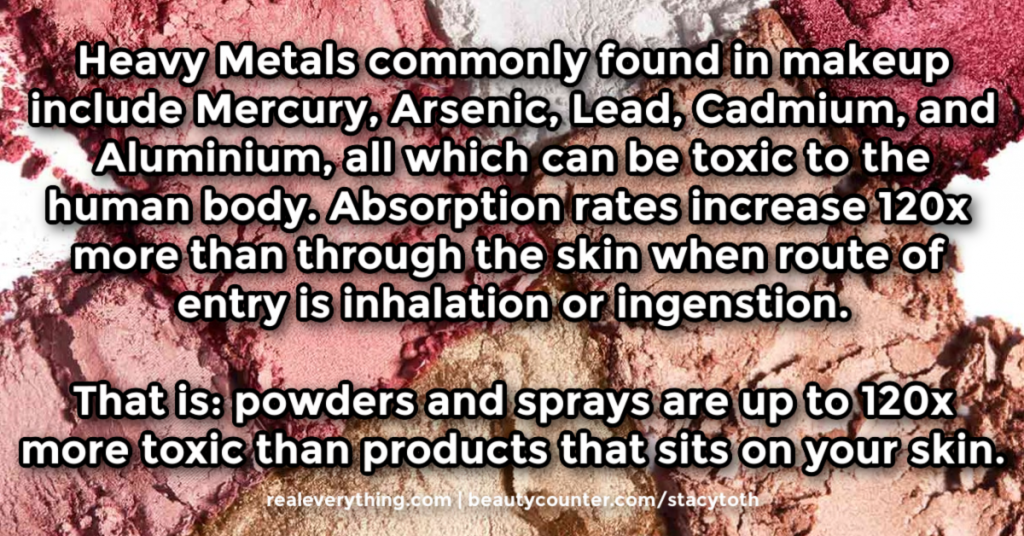
For those with compromised immune systems and MTHFR, it’s essential to avoid heavy metal exposure and chronic accumulation, as your body is not able to properly detoxify them. Cosmetic use over time has also not been significantly tested, as it is an unregulated field, but this study measured heavy metal toxicity in humans after use of 30 different cosmetics:
Test showed no statistical significant difference in concentrations of metals between the expensive and cheap cosmetic products. It is obvious from the present study that the use of these cosmetic products exposes users to low concentrations of toxic heavy metals which could constitute potential health risk to users since they are known to accumulate in biological systems over time. Similarly, regular monitoring of other heavy metals and chemicals used in the manufacture of cosmetics products which may cause health risks to users should be emphasized. [source]
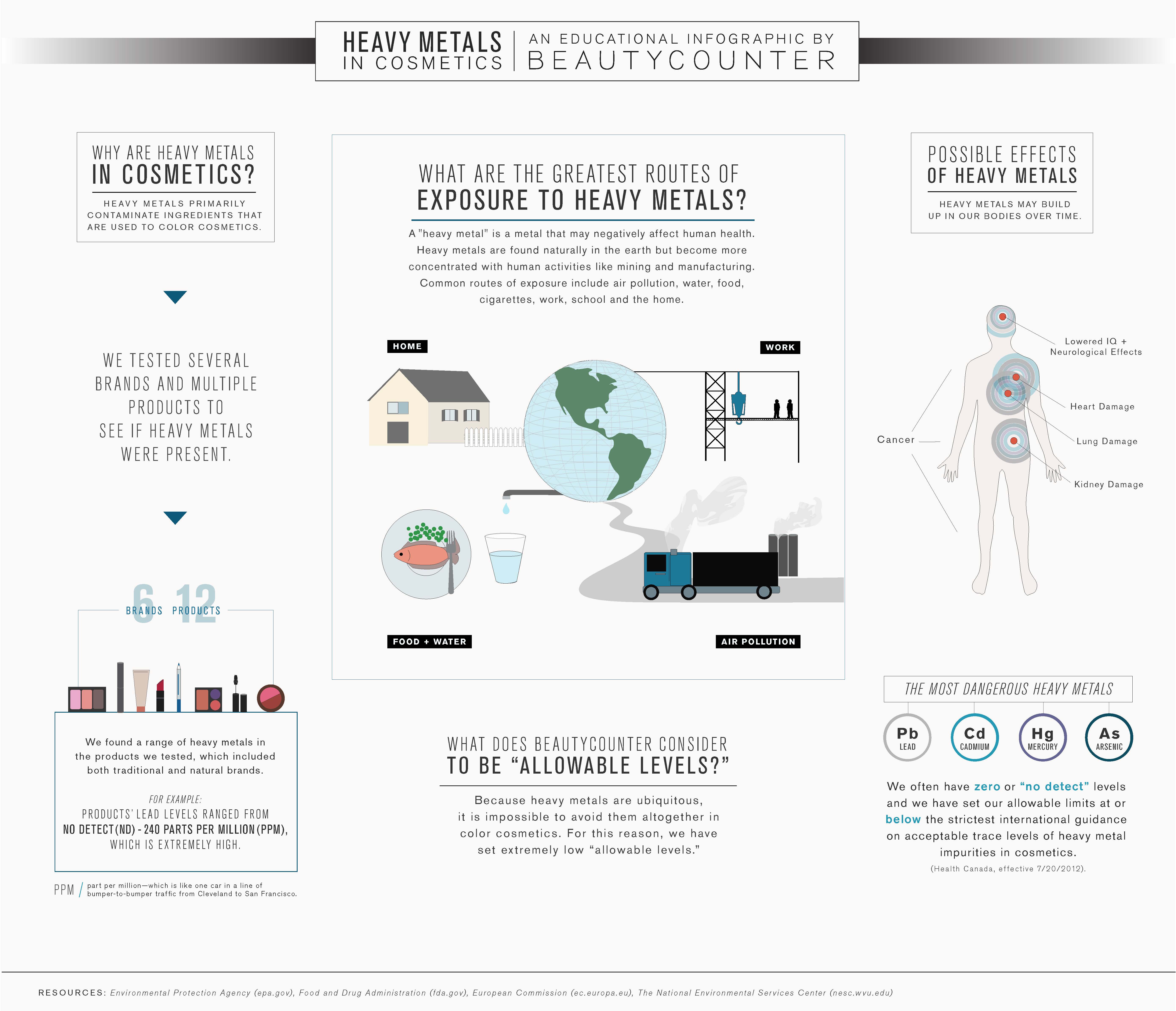
As noted in the above infographic, the main reason I choose Beautycounter for my cosmetics is because of the testing they do on all products – both for heavy metals and hormone disrupting chemicals. They not only test the source, but they batch test to ensure that changes to safety over time do not occur. As natural brands often use clay-based and ingredients of the earth, they often test the highest in heavy metals. The only way to know your personal care products do not contain heavy metals is to test them. And not just once when the original source is created, but regularly to ensure that levels do not change as the supply chain is modified over time.
For example, a mineral-based powder foundation brand may test for heavy metals at creation of a product. But that product was years and years old and established. If the brand never re-tested when new batches of source materials came in, it may over time contain heavy metals, when originally not in the formula. This happened with Beautycounter in a recent batch test of their clay-based masks. I love that they immediately pulled the product, showing that safety standards were of more importance than their bottom line.
Hormone Disrupting Chemicals
I’ve discussed this numerous times before, and it’s well known and understood in the scientific field – so I won’t belabor the point. But here are two quotes I find highly relevant when it comes to using cosmetics that has been both safely sourced and tested to ensure that hormone disruption doesn’t occur.
The main route of exposure is the skin, but the main endpoint of exposure is endocrine disruption. This is due to many substances in cosmetics and sunscreens that have endocrine active properties which affect reproductive health but which also have other endpoints, such as cancer. Reducing the exposure to endocrine disruptors is framed not only in the context of the reduction of health risks, but is also significant against the background and rise of ethical consumerism, and the responsibility of the cosmetics industry in this respect. [source]
Researchers provided teen study participants with personal care products labeled free of chemicals such as phthalates, parabens, triclosan and oxybenzone… Analysis of urine samples before and after a three-day trial in which the participants used the lower-chemical products found significant drops in levels of these chemicals in the body…The researchers noted that cosmetics and personal care products are not well-regulated in this country, and that getting data about health effects from exposure, particularly long-term ones, is difficult. But they say there is growing evidence linking endocrine-disrupting chemicals to neurobehavioral problems, obesity and cancer cell growth. [source]
Here’s a list of ingredients we avoid (full details on why can be found in this Teen Skincare post):
Parabens. Parabens possess estrogen-mimicking properties that are associated with increased risk of breast cancer; they are absorbed and have been identified in biopsy samples from breast tumors.
Fragrance. This term was created to protect a company’s “secret formula.” You could be putting tons of chemicals that are hazardous to your health on and have no idea. Fragrance mixes have been associated with allergies, dermatitis, respiratory distress and potential effects on the reproductive system.
Phthalates. These are known endocrine disruptors and have been linked to increased risk of breast cancer, early breast development in girls, and reproductive birth defects in males and females. Unfortunately, it often hidden as a “fragrance.”
Triclosan. An antimicrobial chemical that’s a known endocrine disruptor — especially thyroid and reproductive hormones, and a skin irritant.
Sodium lauryl sulfate (SLS) / Sodium laureth sulfate (SLES). SLS’s are known to irritate skin, lung, and eye and can cause kidney and respiratory damage. SLS can interact and combine with other chemicals to form nitrosamines, a carcinogen.
Formaldehyde and Formaldehyde-releasing preservatives (FRP’s) are deemed a human carcinogen by The International Agency for Research on Carcinogens (IARC). It causes allergic skin reactions and may also be harmful to the immune system.
Toluene. Affects your respiratory system, cause nausea and irritate your skin as well as cause developmental damage in the fetus. Toluene has also been linked to immune system toxicity.
Safely Sourced Ingredients (that continue to be tested)
Not all source material is created equal. As noted above, clay may be natural and organic but two different sources may contain varying levels of heavy metals. The same can be said of other natural sources – like rose petals. Beautycounter found that in testing one of the ingredients they use, Rose Wax, ccame back with hormone disrupting chemicals. How could that be, since it was a natural source? The petals were being collected and stored in plastic bags! This is why testing is the ultimate standard for safety – not just the source of an ingredient.
One of the things that sets quality cosmetics apart is the pigmentation and payoff of color. Getting shimmer, glitter, and deep color pigments is incredibly difficult to do naturally – but moreso it’s even more difficult to regulate for safety. As noted, natural mineral-based colors are often contaminated with heavy metals. This was an incredible educational element for me, as I was unaware of the various levels of synthetic color, safety (or not) of them, and how this could be used in the context of a clean-ingredient brand. An example of standards that satisfy what I am looking for:
To determine if we are comfortable formulating with a specific colorant, we first review each one from a global regulatory perspective. As part of our Ingredient Selection Process we further screen each colorant for any known human health and environmental hazard endpoints, including but not limited to irritation, dermal sensitization, carcinogenicity, mutagenicity, developmental and reproductive toxicity, endocrine disruption, aquatic toxicity, and impose further restrictions as needed. We then account for exposure routes relevant to safety (e.g., dermal vs. oral exposures to the product). When possible, we give preference to colorants that come from nature. But because many of our makeup products (Foundations, Powders, Lip Products) require richly-pigmented and long-lasting benefits, we have also identified a group of synthetic colorants that meet our desired physical attributes, ensure the stability of our product, and exceed our health hazard screening criteria. One of the reasons we use synthetic colors is that natural colorants may be carriers of toxic, heavy metals that are not required to be on the label. Additionally, the synthetic colorants we choose to formulate with have better stability, more consistent color control, and are better able to meet global regulatory guidelines for safety, purity, and heavy metal content. This is an example of a case where “natural” does not necessarily mean safer, and synthetic does not necessarily mean “toxic.”
We mark the purity of all our colorants by running our own heavy metal analysis, and testing each batch of our finished color cosmetics according to the stringent limits we consider to be the most health protective. We monitor and test our products for 17 different heavy metals. Of the 153 cosmetic colorants allowed in the EU, and the 65 cosmetic colorants allowed in the US, Beautycounter prohibits the vast majority from being used in our products. We currently use 18 colorants in our cosmetics, 10 of which are “naturally-derived” and 8 of which are “synthetic” colorants. Through our rigorous screening and testing process, our commitment to transparent and ethical sourcing, and our proactive involvement at every step of the manufacturing process, we are able to fulfill our promise and provide you with products that meet our standards of safety and performance.
I also personally prioritize brands that source sustainably and responsibly, using both eco and humane standards. Though not a human health safety issue, it is a safety issue for the workers who collect the source ingredients of your cosmetics. I encourage you to look into this as well.
Nano Particles
While one of the least understood topics when it comes to cosmetic safety, this is of utmost importance when in the context of powders for your face. As the negative health effects of nano particles are greatest when inhaled – this is guaranteed when powders are used on the face and breathed in from the air, application, and long-term on the face.
They found that nanoparticles between six and 34 nanometers in diameter were able to get past the lung’s defenses to reach the lymph nodes and the bloodstream. [source]
Nanoparticles can potentially move from the lungs to other organs such as the brain, the liver, the spleen and possibly the foetus in pregnant women… Another potential route of inhaled nanoparticles within the body is the olfactory nerve; nanoparticles may cross the mucous membrane inside the nose and then reach the brain through the olfactory nerve… Materials which by themselves are not very harmful could be toxic if they are inhaled in the form of nanoparticles.
The effects of inhaled nanoparticles in the body may include lung inflmmation and heart problems. Studies in humans show that breathing in diesel soot causes a general inflammatory response and alters the system that regulates the involuntary functions in the cardiovascular system, such as control of heart rate. The pulmonary injury and inflammation resulting from the inhalation of nanosize urban particulate matter appears to be due to the oxidative stress that these particles cause in the cells. [source]
In this study an increased heart rate was reported to be associated with increased exposure to airborne ambient particulates. Exposure to ambient air pollution was also shown to be associated with an increase in blood pressure and decreased heart rate variability with no apparent changes in oxygen saturation. [source]
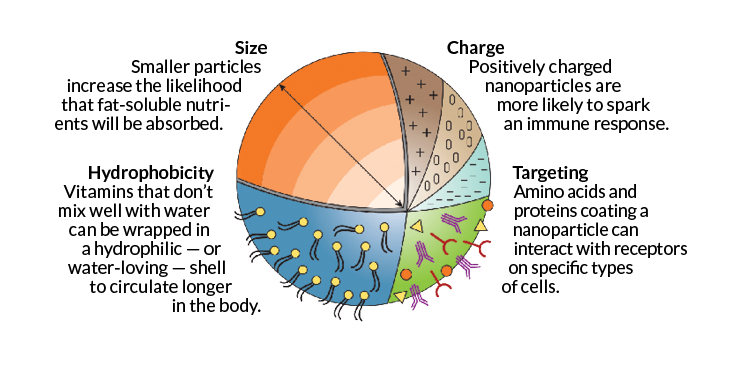
while an incredible breakthru for medicine, this cycle can be very dangerous with cosmetics
In this study, nanoparticles were still detected in urine 3 months after exposure! Given the body of information about nano particles, despite the positive implications this technology may have on advancing medicine when delivering the proper drug via this system that bypasses our biological protective mechanisms, I know I look to ensure all my cosmetic powders and sprays are “non-nano”!
Glitter
This was a new one for me. Honestly I was still buying wrapping paper and all kinds of things with tons of glitter. Who doesn’t love glitter?! Turns out, it’s made out of aluminum and plastic – which wasn’t actually a surprise when I found out. As you can imagine, this presents all kinds of health concerns – from heavy metals to hormone disruption as noted above.
Little did most of us know those tiny, shiny metallic specks are made of aluminum and a plastic called PET. When PET breaks down it releases chemicals that disrupt hormones in animals and humans and that are linked with various cancers and neurological diseases. [source]
Beautycounter’s New Cosmetics & Powders
You can see now why I’m no longer of the belief that just putting cosmetic powders on top of a clean-ingredient base layer isn’t the healthiest choice. I hope you know that now too! My research has led me to only one brand that meets the standards I am hell bend on expecting. I’m not going to risk my health to look more attractive. That said, I do love me a good glow and long lashes. So what’s a girl to do? Insert the new Beautycounter powders, which check every box noted above.
They deliver long-wear, texture, color intensity, shimmer, and harmless glitter like no other brand I’ve ever seen. In fact, they’ve defined this quality as the 4Ps, which are:
- Payoff – one swipe color intensity; artist grade pigments without questionable ingredients
- Precision – triple milling process to the perfect and precise particle size each time for silky smooth powders that blend beautifully
- Performance – long wear, using Butter Powder, a natural binder that goes on smoothly and last all day
- Purity – each batch of powders are tested for heavy metals, so these high performing powders are significantly safer
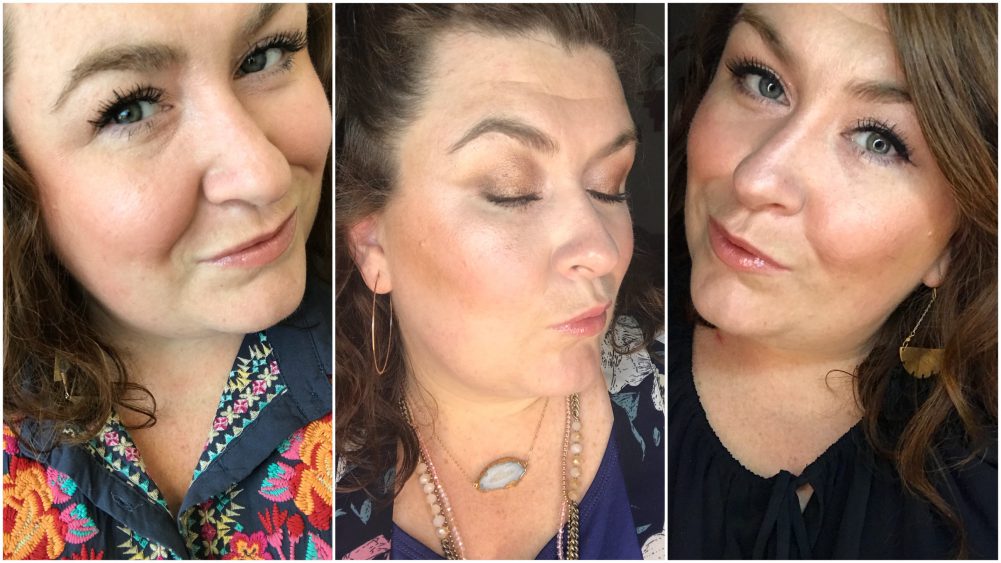
Left: every day look
Base: Dew Skin in No. 1, Concealer Pen in Fair; Lip Gloss in Blush Shimmer
Cheeks: Nectar Satin Blush, Halo highlighter on top of cheek bones
Eyes: Halo in corner of eyes*, Topaz in crease, Lash Food Primer, Volumizing Mascara
Middle: feeling sassy any day
Base: Dew Skin in No. 1, Concealer Pen in Fair; Lip Gloss in Blush Shimmer
Cheeks: Nectar, Halo highlighter on top of cheek bones, top of nose, and cupid’s bow; Topaz and Dune Bronzer under blush
Eyes: Halo in corner of eyes*, Classic Eye Palette, Lash Food Primer, Volumizing Mascara
Right: evening out
Base: Dew Skin in No. 1, Concealer Pen in Fair; Lip Gloss in Blush Shimmer
Cheeks: Melon; Halo highlighter on top of cheek bones; Topaz under blush
Eyes: Halo in corner of eyes*, Romantic Eye Palette, Liquid Liner, Lash Food Primer, Volumizing Mascara
*I love this Morphe brush for using the highlighters, especially in the corner of the eyes – it’s perfect. Want to learn more and be kept in the know? Join my e-mail list and my Facebook group!
While I am NOT a makeup expert, I will admit to having an obsession before my income went to being a parent. I would buy every new product launch from my favorite brands, so I know a quality cosmetic. I am blown away by the pigmentation and payoff able to be achieved by Beautycounter in these new products. The best deal is the Flawless in Five customizable bundle. [edited to add: some of the above makeup is discontinued – you can see the new eyeshadows here and the even better Think Big All-in-One Mascara (no primer needed here)
I also cannot believe the incredible mica-based harmless glitter they were able to achieve. Finally a safe option! I share tutorials and looks with each over on Instagram.
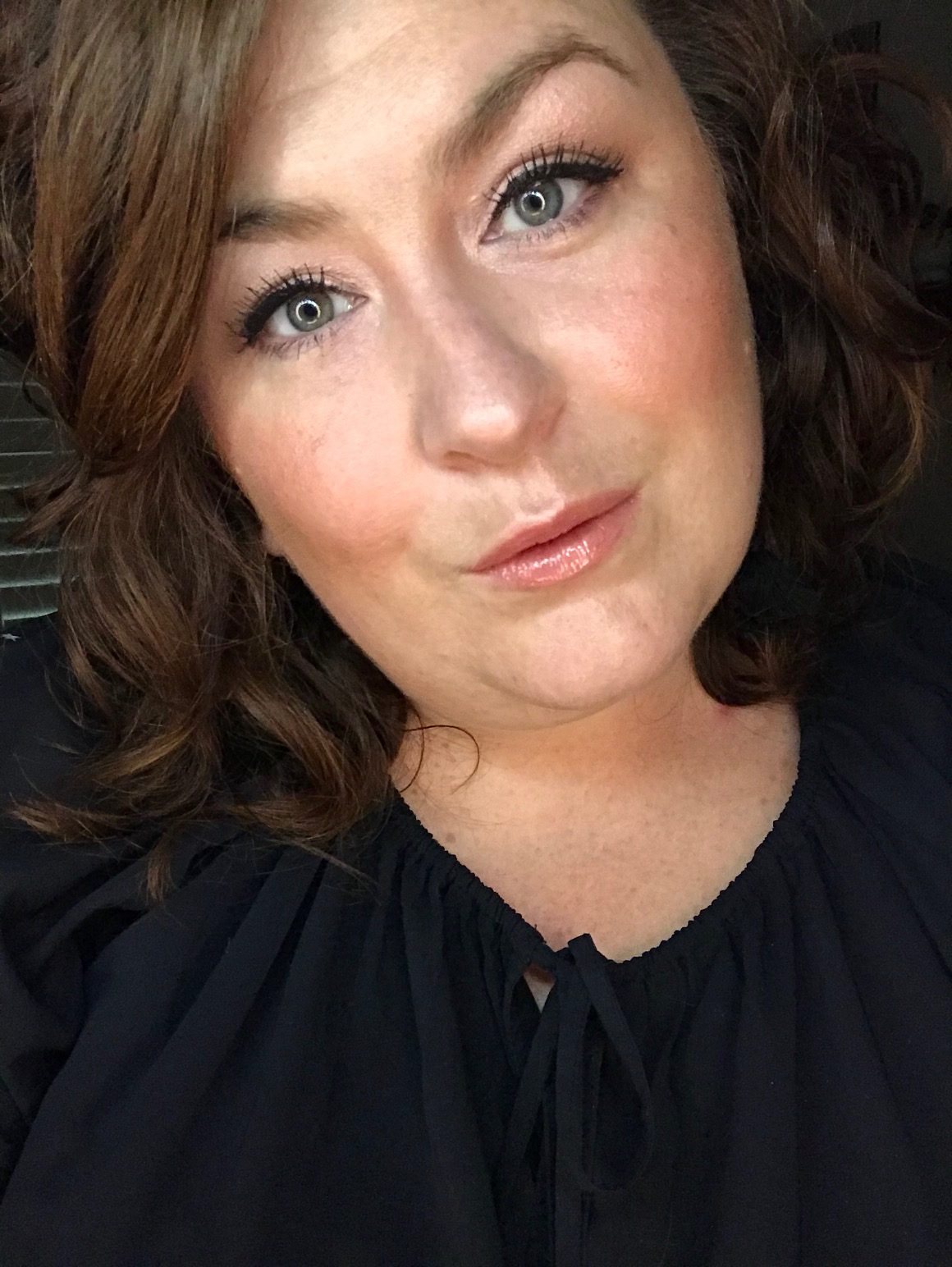 No filter.. just ALL the highlighters and a glorious halo light.
No filter.. just ALL the highlighters and a glorious halo light.Imma keep working that liquid eyeliner to Adele status!
Want more info on our Real Life? Healthy recipes, parenting tips, and general lifestyle stuff goes out in our Real Everything newsletter, join here.
Never want to miss a post, sale, or deal? Join my Healthy Inside & Out e-mail list for more info on non-toxic living and safer skincare and get free samples from me!

